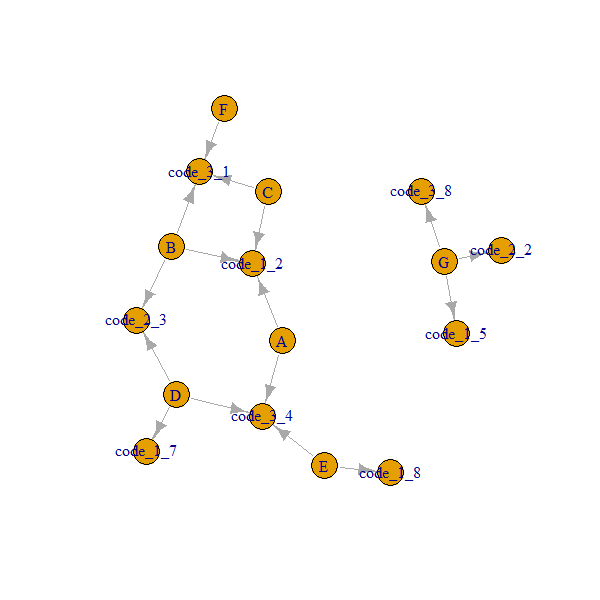I have a data.table:
groups <- data.table(group = c("A", "B", "C", "D", "E", "F", "G"),
code_1 = c(2,2,2,7,8,NA,5),
code_2 = c(NA,3,NA,3,NA,NA,2),
code_3 = c(4,1,1,4,4,1,8))
group code_1 code_2 code_3
A 2 NA 4
B 2 3 1
C 2 NA 1
D 7 3 4
E 8 NA 4
F NA NA 1
G 5 2 8
What I would like to achieve, is for each group to find the immediate neighbors based on the available codes. For example: Group A has immediate neighbors groups B, C due to code_1 (code_1 is equal to 2 in all groups) and has immediate neighbor groups D,E due to code_3 (code_3 is equal to 4 in all those groups).
What I tried is for each code, subsetting the first column (group) based on the matches as follows:
groups$code_1_match = list()
for (row in 1:nrow(groups)){
set(groups, i=row, j="code_1_match", list(groups$group[groups$code_1[row] == groups$code_1]))
}
group code_1 code_2 code_3 code_1_match
A 2 NA 4 A,B,C,NA
B 2 3 1 A,B,C,NA
C 2 NA 1 A,B,C,NA
D 7 3 4 D,NA
E 8 NA 4 E,NA
F NA NA 1 NA,NA,NA,NA,NA,NA,...
G 5 2 8 NA,G
This "kinda" works but I would assume there is a more data table kind of way of doing this. I tried
groups[, code_1_match_2 := list(group[code_1 == groups$code_1])]
But this doesn't work.
Am I missing some obvious data table trick to deal with it?
My ideal case result would look like this (which currently would require using my method for all 3 columns and then concatenating the results):
group code_1 code_2 code_3 Immediate neighbors
A 2 NA 4 B,C,D,E
B 2 3 1 A,C,D,F
C 2 NA 1 A,B,F
D 7 3 4 B,A
E 8 NA 4 A,D
F NA NA 1 B,C
G 5 2 8


igraph, it could be really interesting. – Lamar